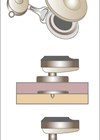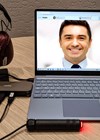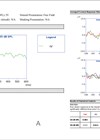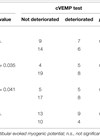Audiology features archive for November 2022
Paediatric auditory brainstem implant: overview and outcomes
Auditory brainstem implants were first used in adults with NF2. They have more recently become a technology option for children but what is the evidence to support this choice? This article discusses the evidence so far. Auditory brainstem implant is...
Management of single-sided deafness in adults: a bone conduction solution
Single-sided deafness (SSD) presents a limited number of methods for management, and not all of them meet the patient’s expectations. The aim of this article is to set out the available bone-conduction treatment methods for managing single‑sided deafness in adults....
Innovations in remote/teleaudiology patient care
Audiometry remains the gold standard in hearing evaluations. Changes in the delivery of audiometry remain a key challenge in providing a telehealth approach to hearing care. The team at Lyon University Hospital validated an innovative approach to solving this challenge,...
Aided cortical assessment: uses in a paediatric hearing implant centre
When can an aided cortical assessment help decision making in a child’s hearing journey? In this article, the author demonstrates the application using an enlightening case study approach. A device, be it a conventional hearing aid or hearing implant, ideally,...
Vestibular dysfunction after cochlear implantation in children
Whilst vestibular dysfunction is a known outcome of cochlear implant surgery, do we know the risk factors associated with this, particularly in children? In this article a team from University of Tokyo discuss their findings. Cochlear implantation (CI) is an...










